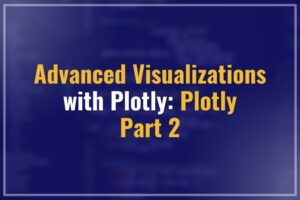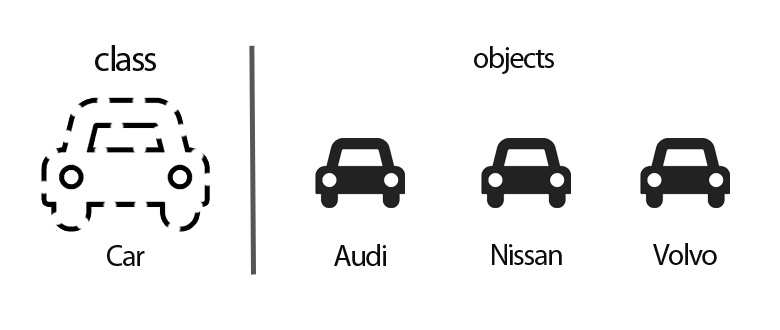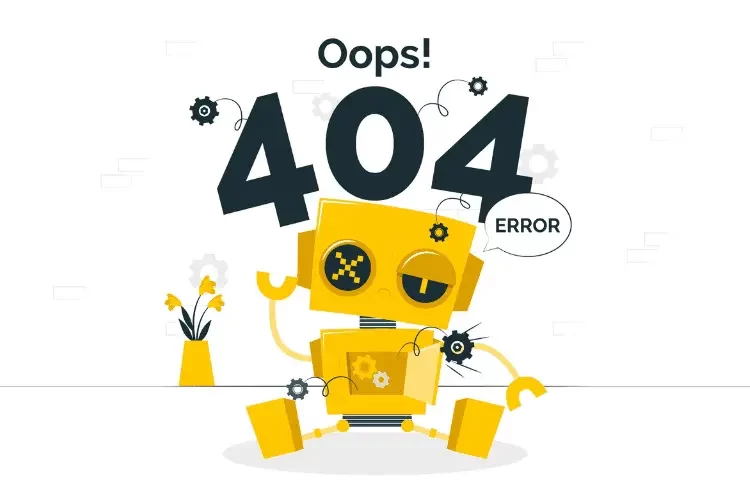
Hello, everyone! Althaf here from 1StepGrow. It’s that exciting time again where we dive headfirst into a crucial Python topic: Introduction to Object Oriented Programming in python (OOP). If you’ve been keeping up with our earlier posts, you’re already part of the 1stepGrow family. If not, no worries – you’re about to join an enlightening exploration into the foundations of Object-Oriented Programming. Let’s get started!
In this segment, we’re taking the wheel and steering you through the dynamic landscape of OOP concepts in Python. Brace yourself for an interactive and engaging experience as we uncover the core principles that drive modern software development.
Object-Oriented Programming, commonly known as OOP, is a robust programming paradigm that places the spotlight on the organization and manipulation of data and functionality through the concept of objects. In OOP, code is structured in a way that mirrors the real world, making it easier to design, develop, and maintain complex software systems.

At its core, OOP revolves around the idea of encapsulating data (attributes) and the operations that manipulate that data (methods) into cohesive units called “objects.” These objects serve as the building blocks of a program, allowing developers to create modular, reusable, and more manageable code.
In this Introduction to Object Oriented Programming in python let’s break down the concept of Object-Oriented Programming (OOP) using a simple example that everyone can relate to: a Car.
Imagine you’re designing a program to simulate cars. OOP would help you organize and manage the car-related data and actions in a more intuitive way.

In OOP, you start by thinking about the main components of your program. For a car, you’d consider attributes like color, make, model, and speed. These attributes define the state of a car.
Encapsulation means bundling data (attributes) and the methods (actions) that work with that data together into a single unit. In our example, each car would be an object that combines its attributes and methods.
So, let’s create an object called “Car”. This object has attributes like color (e.g., “red”), make (e.g., “Toyota”), model (e.g., “Camry”), and speed (e.g., 60 mph).
Now, let’s define methods (actions) that a car can perform. For instance, we might have methods like “accelerate” and “brake”. When you call car.accelerate(), it increases the speed attribute. When you call car.brake(), it decreases the speed attribute.
Think of a car object as a real car you see on the road. A car has its unique attributes (color, make, model) and can perform actions (accelerate, brake).
This mapping of real-world entities to objects and their actions is the heart of OOP.
Using OOP, you can create multiple car objects with their own individual attributes and methods, without worrying about them interfering with each other. You can easily add new car types or modify their behaviours without affecting the entire program. It’s like building with LEGO blocks – each piece (object) has its purpose and fits together seamlessly.

In essence, OOP helps you think about your program in a more natural, intuitive way, mimicking the real-world objects and their interactions. It organizes your code, makes it more reusable, and simplifies the development and maintenance of even more complex systems.
Here are some compelling reasons why OOP is widely embraced in the Python programming community:
OOP encourages breaking down complex systems into smaller, manageable modules (classes and objects). These modules can be reused in different parts of your program or in other projects, saving development time and effort.
OOP promotes a structured approach to coding. Classes and objects help organize code in a more logical and intuitive manner, making it easier to understand and maintain.
OOP’s emphasis on modelling real-world entities as objects and their interactions makes it easier to translate real-world scenarios into code. This alignment enhances communication between developers and stakeholders.
OOP promotes collaboration among developers by providing a common framework for communication. When everyone follows OOP principles, it becomes easier to understand and work with each other’s code.
Let us take a look at some of the key concepts that we will come across in the Oops concept of programming
OOP introduces a set of fundamental concepts:
These are blueprints or templates for creating objects. They define the structure and behavior that objects of a certain type will have.
Instances of classes that encapsulate data and behavior. Each object is a self-contained unit that can interact with other objects.
Also known as properties or fields, attributes are the data associated with an object. They represent the state of an object.
These are functions defined within a class that enable objects to perform actions or operations. Methods allow objects to interact with their own data and other objects.
This concept allows you to create a new class based on an existing class, inheriting its attributes and methods. It promotes code reuse and hierarchy.
It enables objects of different classes to be treated as if they are objects of a common parent class. This promotes flexibility and modularity in code.
By embracing OOP, developers can write more modular, scalable, and maintainable code. OOP’s emphasis on data encapsulation, abstraction, and code reusability makes it a fundamental approach for crafting software systems that are both efficient and intuitive to work with. As we journey through this blog, you’ll not only understand these concepts in-depth but also witness their power through practical examples and applications.
In this introductory segment, Introduction to Object Oriented Programming in python we’ve embarked on an exciting journey into the realm of Object-Oriented Programming (OOP) in Python. We’ve explored the fundamental concepts that make up the heart of OOP:
As we venture further into the world of Object-Oriented Programming, we’ll unravel more advanced concepts, explore real-world examples, and deepen our understanding of how OOP can revolutionize the way we approach programming challenges.
Congratulations on completing Part One! We’re excited to have you join us on this journey, and we wish you the best of luck as we delve deeper into the captivating realm of Object-Oriented Programming in Python. Stay tuned for more enlightening insights and practical applications in Part Two. Happy coding! and follow 1stepgrow.
We provide online certification in Data Science and AI, Digital Marketing, Data Analytics with a job guarantee program. For more information, contact us today!
Courses
1stepGrow
Anaconda | Jupyter Notebook | Git & GitHub (Version Control Systems) | Python Programming Language | R Programming Langauage | Linear Algebra & Statistics | ANOVA | Hypothesis Testing | Machine Learning | Data Cleaning | Data Wrangling | Feature Engineering | Exploratory Data Analytics (EDA) | ML Algorithms | Linear Regression | Logistic Regression | Decision Tree | Random Forest | Bagging & Boosting | PCA | SVM | Time Series Analysis | Natural Language Processing (NLP) | NLTK | Deep Learning | Neural Networks | Computer Vision | Reinforcement Learning | ANN | CNN | RNN | LSTM | Facebook Prophet | SQL | MongoDB | Advance Excel for Data Science | BI Tools | Tableau | Power BI | Big Data | Hadoop | Apache Spark | Azure Datalake | Cloud Deployment | AWS | GCP | AGILE & SCRUM | Data Science Capstone Projects | ML Capstone Projects | AI Capstone Projects | Domain Training | Business Analytics
WordPress | Elementor | On-Page SEO | Off-Page SEO | Technical SEO | Content SEO | SEM | PPC | Social Media Marketing | Email Marketing | Inbound Marketing | Web Analytics | Facebook Marketing | Mobile App Marketing | Content Marketing | YouTube Marketing | Google My Business (GMB) | CRM | Affiliate Marketing | Influencer Marketing | WordPress Website Development | AI in Digital Marketing | Portfolio Creation for Digital Marketing profile | Digital Marketing Capstone Projects
Jupyter Notebook | Git & GitHub | Python | Linear Algebra & Statistics | ANOVA | Hypothesis Testing | Machine Learning | Data Cleaning | Data Wrangling | Feature Engineering | Exploratory Data Analytics (EDA) | ML Algorithms | Linear Regression | Logistic Regression | Decision Tree | Random Forest | Bagging & Boosting | PCA | SVM | Time Series Analysis | Natural Language Processing (NLP) | NLTK | SQL | MongoDB | Advance Excel for Data Science | Alteryx | BI Tools | Tableau | Power BI | Big Data | Hadoop | Apache Spark | Azure Datalake | Cloud Deployment | AWS | GCP | AGILE & SCRUM | Data Analytics Capstone Projects
Anjanapura | Arekere | Basavanagudi | Basaveshwara Nagar | Begur | Bellandur | Bommanahalli | Bommasandra | BTM Layout | CV Raman Nagar | Electronic City | Girinagar | Gottigere | Hebbal | Hoodi | HSR Layout | Hulimavu | Indira Nagar | Jalahalli | Jayanagar | J. P. Nagar | Kamakshipalya | Kalyan Nagar | Kammanahalli | Kengeri | Koramangala | Kothnur | Krishnarajapuram | Kumaraswamy Layout | Lingarajapuram | Mahadevapura | Mahalakshmi Layout | Malleshwaram | Marathahalli | Mathikere | Nagarbhavi | Nandini Layout | Nayandahalli | Padmanabhanagar | Peenya | Pete Area | Rajaji Nagar | Rajarajeshwari Nagar | Ramamurthy Nagar | R. T. Nagar | Sadashivanagar | Seshadripuram | Shivajinagar | Ulsoor | Uttarahalli | Varthur | Vasanth Nagar | Vidyaranyapura | Vijayanagar | White Field | Yelahanka | Yeshwanthpur
Mumbai | Pune | Nagpur | Delhi | Gurugram | Chennai | Hyderabad | Coimbatore | Bhubaneswar | Kolkata | Indore | Jaipur and More